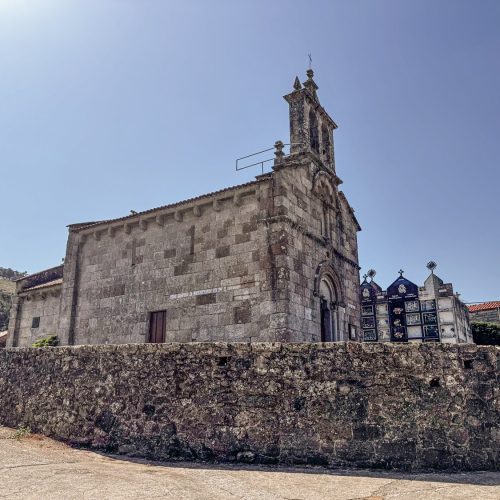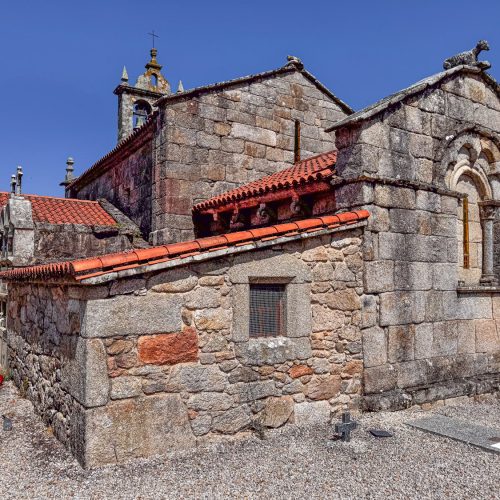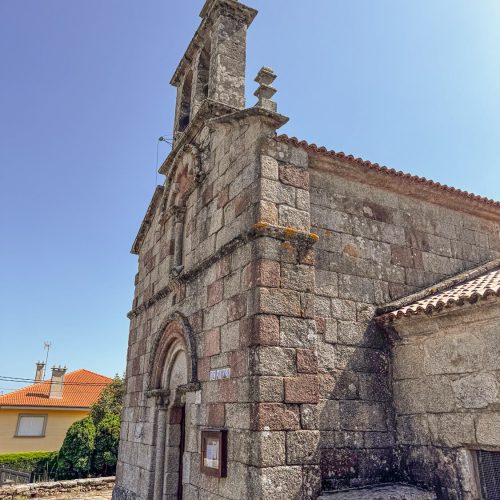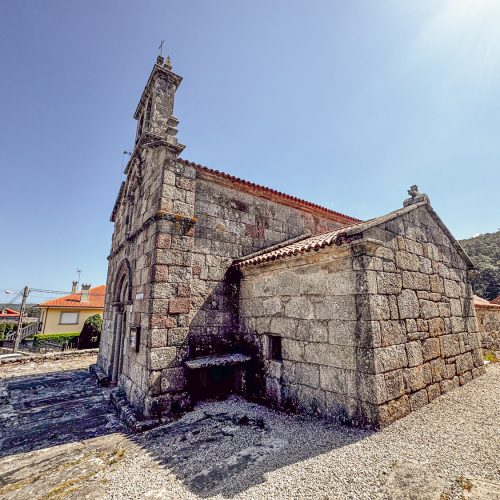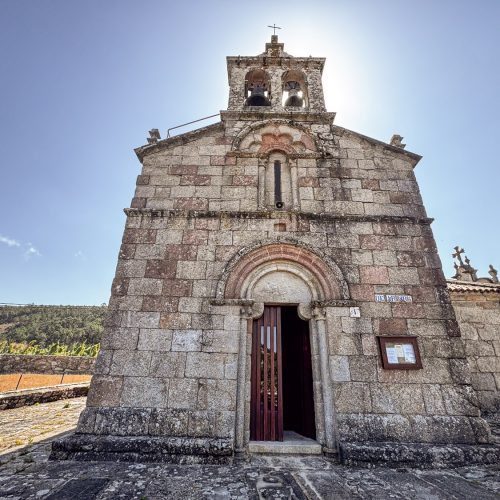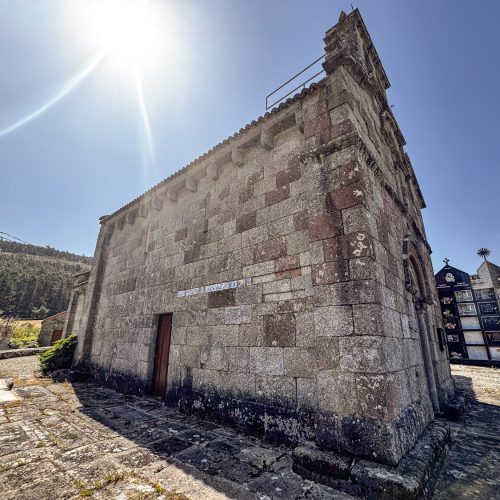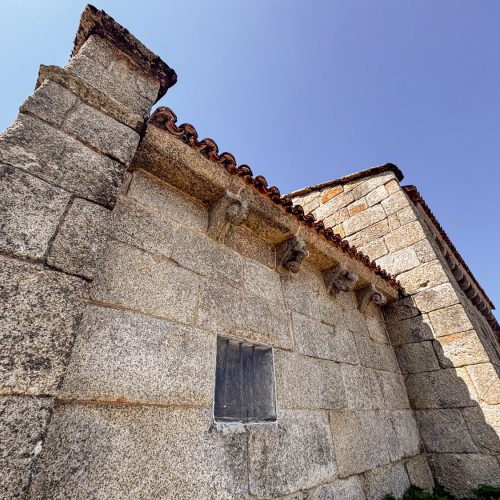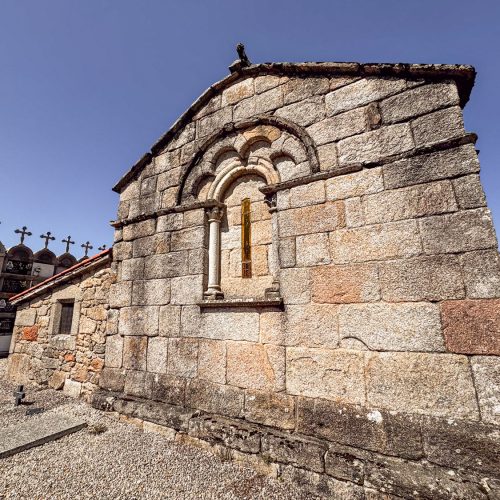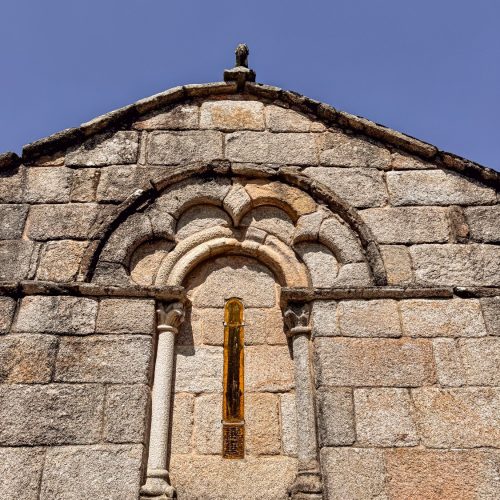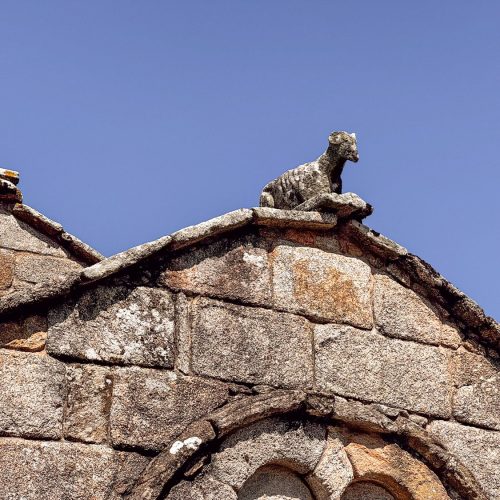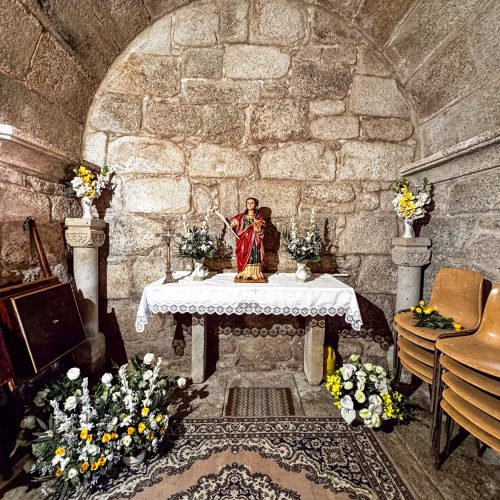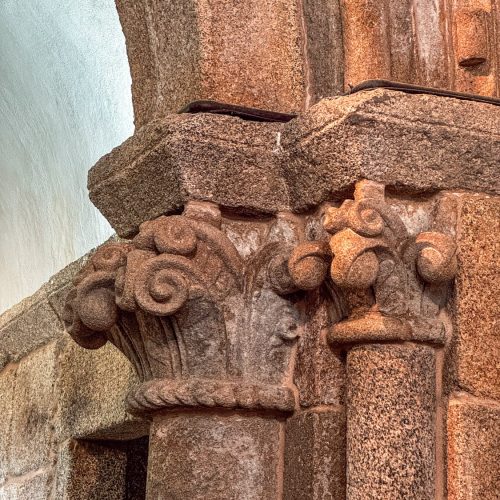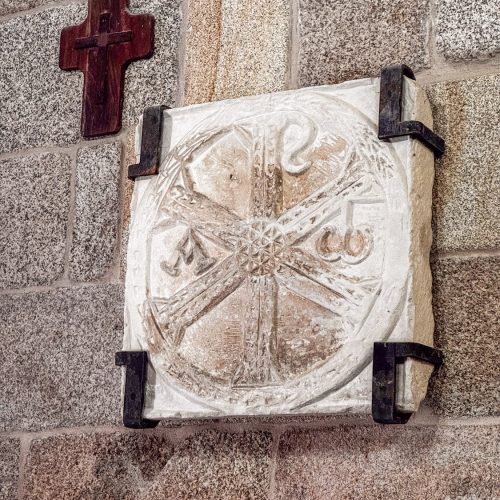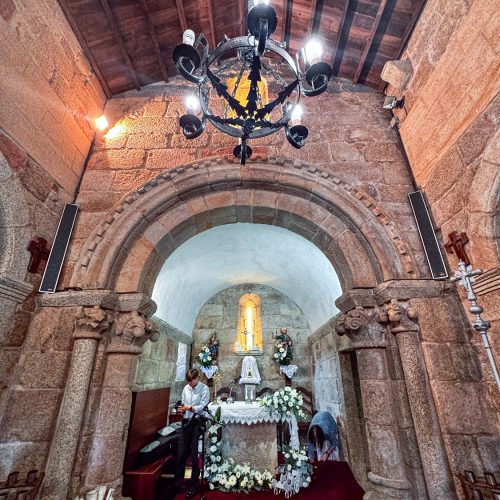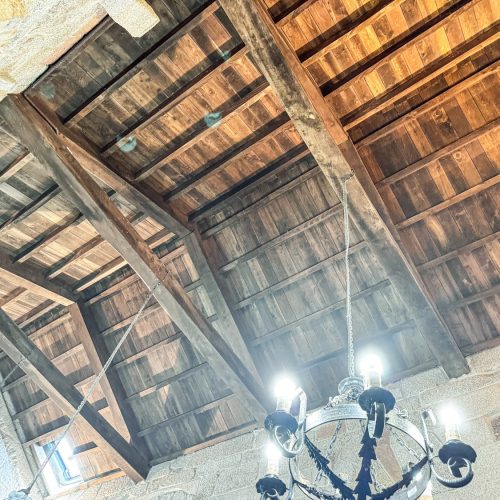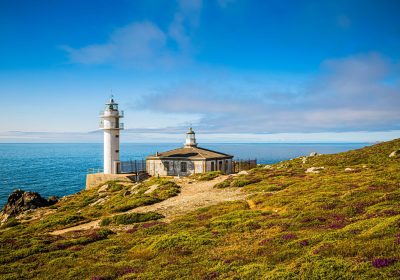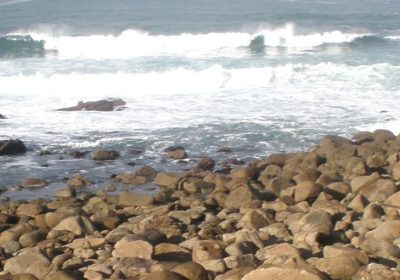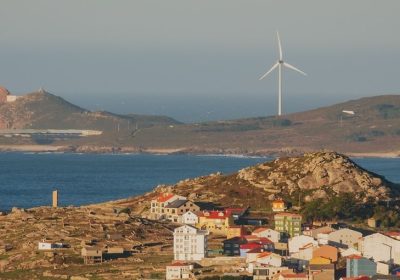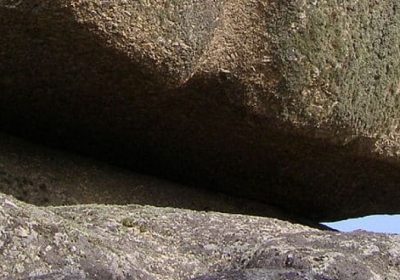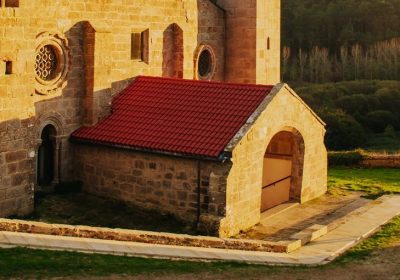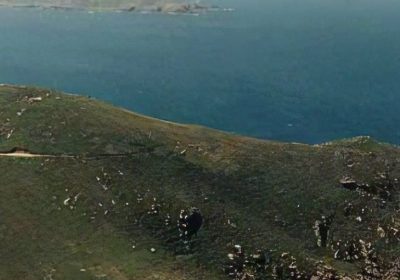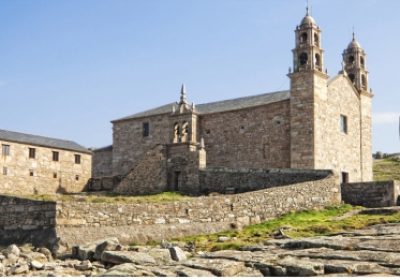The Parish Church of San Pedro de Leis stands in Leis de Nemancos, Muxía, 71 km from Santiago de Compostela and 10 km from the town centre. Medieval records are scarce: the church is mentioned in 1220 and belonged to the monastery of San Paio de Antealtares; in the 17th century the parish was linked to San Cristovo de Carnes (Vimianzo) and San Pedro de Porto (Camariñas).
It has a single-nave layout with a rectangular apse; the nave has a pitched roof and the apse a barrel vault. The best-preserved Romanesque features cluster around the chancel: a semicircular triumphal arch, double and raised, with a billet hood mould; columns and colonnettes with Attic-inspired bases and vegetal capitals bearing leaves, volutes and pomes. Splayed semicircular windows and Romanesque doors survive on the north and west walls.
Outside, the west front features a portal with two archivolts on slender columns, capitals with volutes and pomes, and richly carved imposts with rosettes, four-petal flowers, semicircles and half-balls. Above the portal, a window displays a four-lobed festoon, a motif repeated on the apse end. Romanesque corbels show pomes, pearled volutes, contortionists, bovine heads and balls, and a recumbent lamb appears on the apse gable.
Beneath the altar lies a carved limestone chrismon, a rare piece in Galicia, interpreted by some as a Romanesque consecration cross and by others as an imported Early Christian work (6th century). The 2004–2005 restoration, led by Alejandra Quintáns, used red granite to mark the intervention areas. By its sculpture, San Pedro de Leis is dated to the late 12th century (c. 1170–1180).

